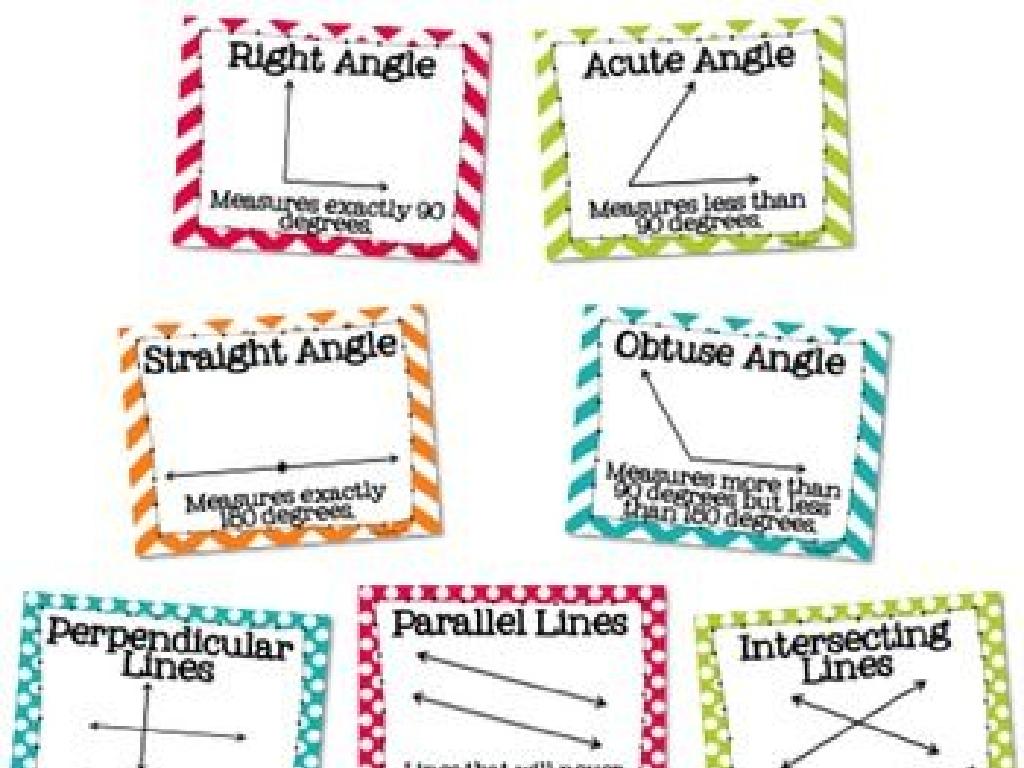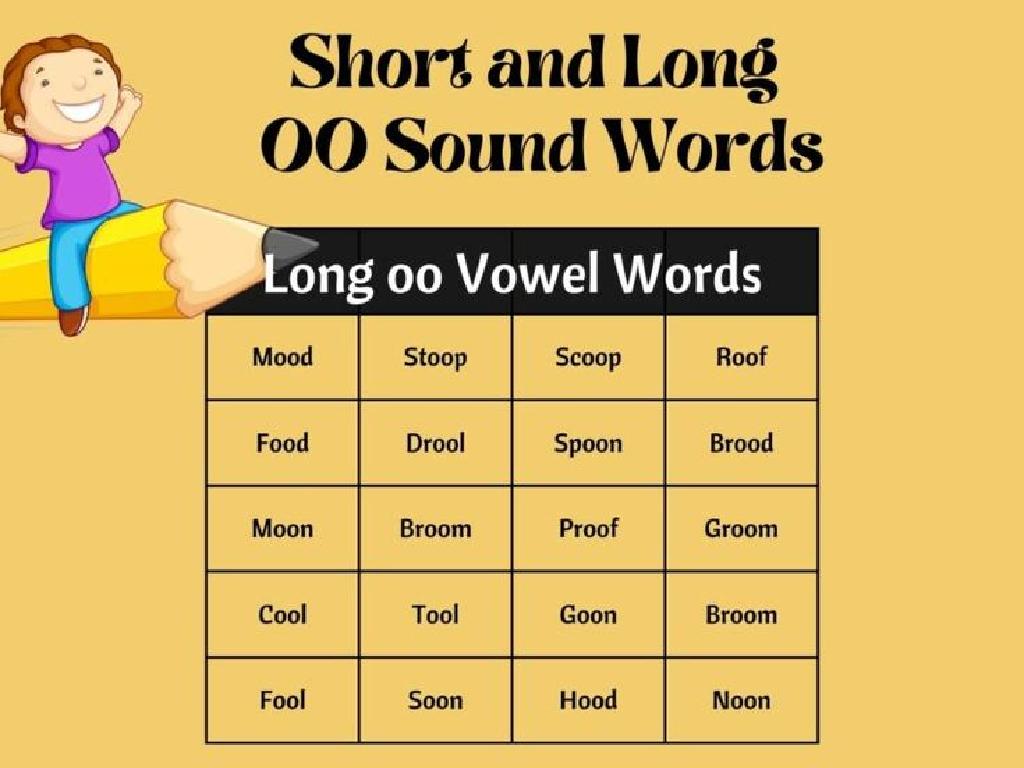Two-Step Addition And Subtraction Word Problems - Up To 20
Subject: Math
Grade: Second grade
Topic: Mixed Operations Word Problems: One Digit
Summary: This engaging second grade math lesson helps students master two-step addition and subtraction word problems with numbers up to 20. Learners become "math detectives," using clues and key words to solve mixed operations scenarios. Activities include relatable story problems, hands-on practice, and teamwork games, all designed to boost problem-solving and reading comprehension. By the end, students confidently apply strategic thinking to tackle any two-step math word problem.
Please LOG IN to download the presentation. Access is available to registered users only.
View More Content
Math Detectives: Two-Step Problems
– Become math detectives today
– Solve addition & subtraction problems
– Find clues in the problem to decide if you should add or subtract
– Learn two-step problem-solving
– Follow two steps to find the solution. Example: If you have 5 apples and buy 7 more, then give 3 to a friend, how many do you have?
– Use numbers up to 20
– All numbers will be 20 or less, perfect for practicing!
|
In this class, students will engage in solving mixed operation word problems, specifically focusing on two-step problems involving addition and subtraction within 20. Emphasize the role of a detective in solving these problems, looking for clues within the word problem to determine which operations to use. Provide examples and guide them through the process of identifying the necessary steps. Encourage students to think critically about each problem and to use their understanding of basic arithmetic to find the solutions. This will not only help them with their math skills but also enhance their problem-solving abilities. Prepare to assist students with examples and ensure they understand the concept of performing two operations in sequence to reach the final answer.
Understanding Two-Step Word Problems
– Word problems: a numerical story
– Read, comprehend, and solve
– Example: Two-step problem
– E.g., Amy had 10 apples, gave 3 to Ben, then got 5 more. How many does she have now?
– Steps to solve word problems
– 1) Identify numbers and actions 2) Decide the order of operations 3) Solve step by step
|
This slide introduces students to the concept of word problems as stories that involve numbers. The goal is to help them understand that solving a word problem involves reading comprehension and mathematical operations. Start by explaining that word problems describe situations that require math to find the answer. Then, walk through an example problem as a class, demonstrating how to break down the problem into manageable steps: identifying the numbers involved, understanding the actions described (giving away, receiving), and determining the order in which to perform the addition and subtraction. Encourage students to always look for keywords that indicate mathematical operations and to solve problems step by step.
Solving Two-Step Word Problems
– Read the problem carefully
– Look for clues to add or subtract
– Words like ‘total’ or ‘in all’ might mean add; ‘left’ or ‘fewer’ might mean subtract
– Highlight important information
– Numbers, items, or actions that help solve the problem
– Practice with an example
– Example: If you have 5 apples and buy 7 more, then eat 3, how many do you have?
|
This slide is aimed at helping second graders understand how to approach two-step addition and subtraction word problems. Start by reading the problem text slowly, ensuring comprehension. Teach students to identify keywords that indicate whether to add or subtract, such as ‘altogether’ for addition or ‘remain’ for subtraction. Highlighting or underlining these clues, along with any numbers or specific details, will help focus on the relevant information. To reinforce the concept, walk through an example problem as a class, demonstrating each step. Encourage students to use these strategies on their own with similar problems for homework.
Solving Two-Step Problems with Apples
– Start with Tom’s 5 apples
– Add 7 apples Tom bought
5 (original) + 7 (bought) = 12 apples
– Subtract 3 apples given away
12 (after buying) – 3 (given away) = 9 apples
– Calculate Tom’s total apples
Tom now has 9 apples in total
|
This slide introduces students to two-step addition and subtraction word problems. The example provided uses a relatable scenario involving apples to demonstrate the process. First, students add the number of apples Tom buys to his original amount. Then, they subtract the number of apples Tom gives to his friend. The goal is to find out how many apples Tom has left. Encourage students to visualize the problem with actual objects or drawings to enhance understanding. Practice similar problems with different numbers and contexts to ensure students are comfortable with the concept.
Let’s Practice Together: Balloon Word Problems
– Start with Sally’s 8 balloons
– Add 4 balloons that fly to her
– Sally now has 8 + 4 balloons
– Subtract 2 balloons that pop
– Oh no! Now she has 12 – 2 balloons
– Calculate Sally’s total balloons
– How many does Sally have now?
|
This slide is an interactive class activity designed to help students practice two-step addition and subtraction word problems. Begin by reading the problem aloud and asking the students to visualize Sally with her balloons. Walk through each step of the problem on the board, adding and then subtracting the balloons. Encourage the students to think about the changes in the number of balloons after each step. After completing the steps, ask the students to calculate the final number of balloons Sally has. Possible variations of the activity could include using physical props like actual balloons or drawings, pairing students to solve similar problems together, or creating a story context where students come up with their own balloon scenarios to solve.
Your Turn to Solve!
– Try solving a problem yourself
– Highlight clue words and info
– Words like ‘total’ or ‘left’ can give hints
– Take time to think about steps
– Break the problem into smaller parts
– Check your work when finished
– Double-check your addition and subtraction
|
This slide is an activity prompt for students to apply their knowledge of two-step addition and subtraction word problems. Encourage them to independently solve a problem, emphasizing the importance of identifying key words and information that indicate which operations to use. Remind them to approach the problem methodically, breaking it down into manageable steps. After solving, they should review their work to ensure accuracy. Provide several example problems of varying difficulty and encourage peer discussion to facilitate learning. This activity will help solidify their understanding of mixed operations in a fun and engaging way.
Class Activity: Math Detective Game
– Become a math detective!
– Partner up for word problem worksheets
– Use detective skills for two-step problems
– Look for clues in the problem to find solutions
– Solve and explain your reasoning
– How did you get the answer? Share with the class!
|
This activity is designed to make solving word problems engaging by turning the students into ‘math detectives’. Provide each pair of students with a worksheet containing various two-step addition and subtraction problems. Encourage them to work together to find the ‘clues’ within the word problems that will help them solve the equations. After solving, each pair should be ready to explain their reasoning to the class, which reinforces their understanding and verbal communication skills. Possible activities: 1) Create a ‘detective case file’ for each problem. 2) Have students ‘interview’ each other to understand the problem better. 3) Set up a ‘crime scene’ where each clue leads to a different part of the problem. 4) Use props like magnifying glasses to find hidden numbers in the problems. 5) Have a ‘detective’s log’ where students write down each step of their problem-solving process.
Detective Work: Reviewing Two-Step Problems
– Congrats on solving math mysteries!
– Mastered two-step addition & subtraction
– We practiced problems with numbers up to 20
– Reading is key – understand the problem
– Look for keywords to find what to do first
– Plan your steps before solving
– Think: What do I need to find? What should I do first and next?
|
As we wrap up today’s lesson, let’s take a moment to appreciate the hard work our little detectives have put into solving two-step addition and subtraction problems. Reinforce the importance of reading the problem carefully to understand what is being asked. Emphasize the strategy of identifying keywords that signal whether to add or subtract. Encourage them to always think about the order of operations: decide which step should come first and which should follow. For homework, provide a few additional problems for practice to reinforce today’s learning. Remember to praise their efforts and progress in becoming math problem-solving experts!




